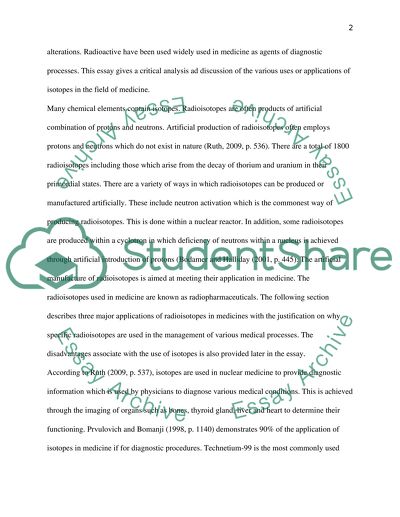Cite this document
(“The Use of Isotopes in Medicine Essay Example | Topics and Well Written Essays - 1500 words”, n.d.)
Retrieved from https://studentshare.org/chemistry/1456282-the-use-of-isotopes-in-medicine
Retrieved from https://studentshare.org/chemistry/1456282-the-use-of-isotopes-in-medicine
(The Use of Isotopes in Medicine Essay Example | Topics and Well Written Essays - 1500 Words)
https://studentshare.org/chemistry/1456282-the-use-of-isotopes-in-medicine.
https://studentshare.org/chemistry/1456282-the-use-of-isotopes-in-medicine.
“The Use of Isotopes in Medicine Essay Example | Topics and Well Written Essays - 1500 Words”, n.d. https://studentshare.org/chemistry/1456282-the-use-of-isotopes-in-medicine.


